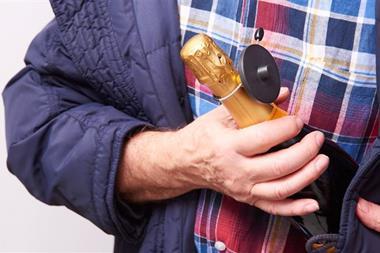There are a whole bunch of options available to retailers looking to make their businesses bloom. Sarah reports on the flower category
You don’t have to know your azalea from your elbow to see that flowers make an attractive addition to any store. With their bright hues and enticing scents they are mother nature’s very own form of pos material. But they’re not just sitting pretty they also have the potential to generate decent margins if you are willing to put in the work.
The first step is to consider your sourcing options. Nim Shingadia of Londis Southwater in West Sussex, had got her supplies from national flower distributor Flowerfête, but when it ceased trading in February, she was one of thousands left in the lurch.
The company sold many of its flowers on a sale or return (SOR) basis, which Nim says she prefers because while her flower sales are steady, they are more of a customer service than a money spinner. For this reason she has sourced another SOR supplier former Flowerfête regional manager Ian Barker, who is now working independently. At 15%, Nim’s margins aren’t sky high, but SOR offers plenty of benefits.
“SOR is a good option for retailers as they don’t have to worry about wastage it removes the risk element for them,” says Barker, who has 25 years-worth of experience in the flower trade.
“I also offer a full merchandising service, which is where a lot of retailers can fall down.”
As well as providing customers with ready-made bouquets, Barker regularly waters the flowers in stores and ensures that they are looking their best.
But not everyone is a fan of SOR. “The problem with SOR is similar to the newspaper situation you only have a limited time in which to claim your returns and it’s hard to get your money back,” claims Rishi Madhani, who owns Today’s Stokenchurch in High Wycombe. His flowers are supplied on a firm sale basis instead, meaning that he has to take a hit if his flowers fail to sell. However, he prefers this method because it allows him more flexibility on pricing. “With this arrangement, I get to decide on the rrp and can offer customers a cheaper price, while making more profit about 22%.”
Display tactics
Colour combinations
When it comes to choosing colours remember that season plays a part. Spring is all about bright yellows and reds, while autumn is associated with more rustic colours, dark creams and oranges. In addition, certain occasions are linked with specific shades whites and reds go down well at Christmas, while Easter is very much a yellow flower celebration.
It’s also very important to consider colour if you are making your own bouquets. A lot of inexperienced people will put six different colours into one bouquet, but you really only need three.
Points of view
It’s imperative to have flowers in view as about 50% of sales are an impulse purchase. Plus, they’re pleasing to the eye and give the shop a good image. Display your flowers either outside the store, or by the door inside. If you’re starting off, you could try a couple of buckets, ideally raised up from floor level so that they stand out. If you have a larger store with a double fronted entrance, you can allow for a fixture with between six and 10 buckets.
Fair trial
If you are introducing flowers to your store, you need to give them a minimum trial of two months as it takes time for customers to get used to the fact that you sell them. There is a wastage factor, but no more than you’d get with any other type of fresh produce.
Source: Paul Reynolds, director of flower wholesaler Fayes Brighton
Surrey retailer Dean Holburn in Redhill puts even higher margins on his firm sale flowers. “My flowers have a margin of about 30 or 40%,” he notes. “Margins are high because you have to factor in waste when dealing with fresh products.”
But to make the biggest margins from flowers, you really have to go the extra mile. David Heritage, who owns The Barns Green Village Store in Horsham, West Sussex, goes to Brighton Fruit & Flower Market to buy his flowers direct from wholesale. Picking your own flowers may sound daunting, and David admits that his flower knowledge is limited, but he claims that his supplier tells him all he needs to know. “What I know about flowers you could write on a postage stamp and still have room left,” he jests, “but Fayes Brighton are very helpful.”
“Buying from us, retailers make 100% margin,” says Fayes director Paul Reynolds. As well as supplying flowers to unaffiliated village stores like David’s, Reynolds also supplies symbol group members, such as Knight’s Budgens of Hassocks, West Sussex. But it takes commitment to make it work, he warns. “Convenience retailers need to come to the market regularly at least twice a week to choose what they want.”
And retailers who do make the effort can even hit margins of above 100% on certain types of flowers. “In our local wholesale market there are 20 flower suppliers to choose from,” says Kash Khera, who owns Simply Fresh in Kenilworth, Warwickshire, with his brother Sukhjit.
“We make more than quadruple our cost price on some of our flowers. You can buy bunches of daisies in summer at 10p a bunch and sell them at £1 for two bunches.”
He says that daffodils can also achieve mega-margins. “We sell daffodils at three bunches for £1, but they’re only costing us 10p a bunch. Coming into the warmer months we’ll sell up to 600 bunches a week.”
Of course, it’s horses for courses, and discovering which types of flower and what price points will work best for your store can be something of a learning curve. “Tulips are a good buy, and can be sold for £1.50 a bunch,” suggests Reynolds. “Then you’ve got spray carnations at £2.95 a bunch, and chrysanthemums for £3.95. But prices fluctuate with flowers, so you have to be on the ball.”
In a more affluent area, it’s worth considering oriental lilies, which will go for between £2 and £4 a stem, as well as roses, Asiatic lilies, iris and ranunculus, he advises.
Simon Biddle of Biddle’s Convenience Store in Redditch, Worcestershire, has seen success with a relatively high price point for his standard bouquet. “On a day-to-day basis we stock a £5.95 mixed bouquet of gerbera, chrysanthemums and carnations, but obviously for special occasions such as Mother’s Day and Easter we provide a few different options,” he says. “We sell between £700 to £1,000-worth of flowers on an average week.”
Meanwhile, Barker offers his customers a price range across the board, with bouquets from £3.99 to £15.99. “I currently offer chrysanthemums, roses, lilies, carnations, mixed bouquets and a spring bouquet with tulips and iris, but flowers pitched at the higher price end will sell only in certain stores,” he notes.
Indeed, Rishi found this out the hard way when customers rejected his high-end bouquets. “In the past I tried selling £7 bunches and they didn’t take off,” he says. After reviewing the situation, he decided to relaunch a flower offering in his store on Valentine’s Day. “It’s good to launch new products on special occasions because then you can speak to lots of different customers. I asked them what they thought of the price, what their favourite flowers were and so on.”
As a result, he has adopted a lower price point. “I stock everyday flowers such as chrysanthemums and carnations and I don’t want to go over £5, so I offer £3, £4 and £5 bunches,” he says.
It can be a case of trial and error, particularly when you’re starting up. But flowers have a lot to offer retailers, not just in terms of profit margins, but also in that their very presence gives customers a positive perception of the store.
“It’s worth it for any store to provide flowers,” says Nim. “If a customer is visiting friends, or someone is taken ill, they’ll be looking for flowers. Plus the store looks much nicer with flowers outside it’s a welcoming sight.”
Rishi urges other retailers to get involved. “If you’re an outfit that sells news and magazines, then people will expect you to have flowers for sale,” he says. “Many retailers still treat them with caution, but it’s definitely worth giving it a try.”





![Muller_Bliss_Whipped_Elevated_Lemon_Meringue_Pie_FF[87]](https://d2dyh47stel7w4.cloudfront.net/Pictures/274x183/2/2/2/352222_muller_bliss_whipped_elevated_lemon_meringue_pie_ff87_462652_crop.jpg)




















10 Readers' comments